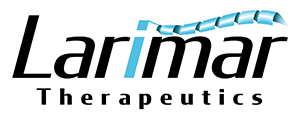Larimar Therapeutics Reports Positive Topline Phase 1 Clinical Trial Data Showing Dose-Dependent Increases in Frataxin Levels in Patients with Friedreich’s Ataxia
- Data demonstrate proof-of-concept by showing that daily subcutaneous injections of CTI-1601 for up to 13 days resulted in dose-dependent increases in frataxin levels from baseline compared to placebo in all evaluated tissues
- Data show that frataxin levels achieved in peripheral tissues (buccal cells) following daily 50 mg and 100 mg subcutaneous injections of CTI-1601 were at or in excess of those that would be expected in phenotypically normal heterozygous carriers
- Safety data indicate that repeated subcutaneous injections of CTI-1601 were generally well tolerated at doses up to 100 mg administered daily for 13 days
- Company management to host webcast and conference call today at
8:00 a.m. ET
FA patients participating in the trial received subcutaneous injections of CTI-1601 or placebo at increasing dose levels and frequencies over a 13-day period. Patients in Cohort 1 were dosed with 25 mg of CTI-1601 or placebo daily for four days, and then every third day until Day 13. Cohort 2 patients were dosed with 50 mg of CTI-1601 or placebo daily for seven days, and then once every other day until Day 13. Patients in Cohort 3 received daily injections of 100 mg CTI-1601 or placebo for thirteen days.
Data show that repeated subcutaneous administration of CTI-1601 resulted in dose-dependent increases in frataxin (FXN) levels from baseline compared to placebo controls. These dose-dependent increases in frataxin levels were seen in all evaluated tissues (buccal cells, skin biopsies, and platelets) with daily dosing. The median change from baseline in frataxin levels observed for each dosing group and tissue are shown in the table below.
| FXN Change from Baseline in Buccal Cells Units: pg FXN / μg total protein Data presented as: n median (25th percentile, 75th percentile) |
||||||||||
| Dose Group | Day 4/7* | Day 13 | ||||||||
| Placebo (n=7) | -0.03 | (-0.18, 0.97 | ) | 0.35 | (-0.02, 0.46 | ) | ||||
| Cohort 1 Active (25 mg, n=6) | 0.39 | (0.01, 0.72 | ) | 0.92 | (0.48, 0.94 | ) | ||||
| Cohort 2 Active (50 mg, n=6) | 1.28 | (1.09, 1.69 | ) | 0.39 | (0.35, 1.08 | ) | ||||
| Cohort 3 Active (100 mg, n=7) | 3.06 | (1.70, 4.16 | ) | 2.64 | (1.93, 3.99 | ) | ||||
| FXN Change from Baseline in Skin Biopsies# Units: pg FXN / μg total protein Data presented as: median (25th percentile, 75th percentile) |
||||||||||
| Dose Group | Day 4/7* | Day 13 | ||||||||
| Placebo (n=7) | N/A | 0.92 | (0.10, 1.17 | ) | ||||||
| Cohort 1 Active (25 mg, n=6) | N/A | 0.87 | (-0.07, 1.69 | ) | ||||||
| Cohort 2 Active (50 mg, n=6) | N/A | 2.82 | (1.93, 4.01 | ) | ||||||
| Cohort 3 Active (100 mg, n=7) | N/A | 10.6 | (7.20, 18.1 | ) | ||||||
| FXN Change from Baseline in Platelets Units: pg FXN / μg total protein Data presented as: median (25th percentile, 75th percentile) |
||||||||||
| Dose Group | Day 4/7* | Day 13 | ||||||||
| Placebo (n=7) | -0.38 | (-1.23, 0.60 | ) | -0.65 | (-1.71, 1.03 | ) | ||||
| Cohort 1 Active (25 mg, n=6) | -0.15 | (-2.18, 0.60 | ) | -0.53 | (-1.01, 0.80 | ) | ||||
| Cohort 2 Active (50 mg, n=6) | 0.30 | (-0.18, 0.75 | ) | -0.87 | (-1.14, -0.70 | ) | ||||
| Cohort 3 Active (100 mg, n=7) | 2.54 | (2.27, 2.70 | ) | 3.55 | (2.71, 4.93 | ) | ||||
*FXN levels from Day 4 and 13 measurements are shown for data derived from Cohort 1. FXN levels from Day 7 and 13 measurements are shown for data derived from Cohorts 2 and 3. Sample collection days varied in each cohort per the clinical trial protocol.
#Skin biopsies were not collected on Day 4 or Day 7 per the clinical trial protocol. Skin biopsies were optional per the protocol and were collected in 5 of the 7 patients in Cohort 3.
“The ability of CTI-1601 to elevate frataxin in the evaluated tissues strongly supports its continued clinical evaluation, as frataxin levels in buccal cells and blood have been shown to be associated with disease severity in FA patients,” said
Safety data from the trial indicate that repeated subcutaneous injections of CTI-1601 were generally well tolerated at doses up to 100 mg administered daily for 13 days. A summary of the safety data, as well as pharmacokinetic data are shown below.
Safety:
- No serious adverse events (SAEs), important medical events, or treatment-related severe adverse events were reported in the trial
- The most common adverse events were mild and moderate injection site reactions (at least one injection site reaction was seen in 43% of placebo patients and in 100% of CTI-1601 patients)
- The number and severity of adverse events did not increase with increasing exposure to CTI-1601
- Of the 27 patients dosed, 26 completed the trial with one Cohort 2 patient receiving CTI-1601 withdrawing after experiencing mild to moderate nausea and vomiting
Pharmacokinetics:
- CTI-1601 was quickly absorbed after subcutaneous administration
- Dose-proportional increases in exposure were observed with increasing doses of CTI-1601
- The mean half-life of CTI-1601 in plasma was approximately 11 hours
Patients who completed the single ascending dose (SAD) and/or MAD clinical trials are eligible to screen for an open-label extension clinical trial, the Jive study, which
Conference Call and Webcast
About the Phase 1 MAD Clinical Trial
The Phase 1 MAD clinical trial was a double-blind, placebo-controlled, randomized clinical trial designed to assess the safety of subcutaneously administered CTI-1601 versus placebo in adult subjects with FA. The primary objective was to assess the safety and tolerability of multiple ascending doses of CTI-1601 in subjects with FA. Key secondary endpoints included pharmacokinetic and pharmacodynamic analyses following increasing multiple doses of subcutaneously administered CTI-1601. Patients from the MAD clinical trial are eligible to screen for an open-label extension trial that
About CTI-1601
CTI-1601 is a recombinant fusion protein intended to deliver human frataxin into the mitochondria of patients with Friedreich’s ataxia who are unable to produce enough of this essential protein. Currently in Phase 1 clinical trials in the U.S., CTI-1601 has been granted Rare Pediatric Disease designation, Fast Track designation and Orphan Drug designation by the U.S. Food and Drug Administration (FDA) and orphan drug designation by the European Commission.
About
Forward-Looking Statements
This press release contains forward-looking statements that are based on Larimar’s management’s beliefs and assumptions and on information currently available to management. All statements contained in this release other than statements of historical fact are forward-looking statements, including but not limited to statements regarding Larimar’s ability to develop and commercialize CTI-1601 and other planned product candidates, Larimar’s planned research and development efforts, and other matters regarding Larimar’s business strategies, use of capital, results of operations and financial position, and plans and objectives for future operations.
In some cases, you can identify forward-looking statements by the words “may,” “will,” “could,” “would,” “should,” “expect,” “intend,” “plan,” “anticipate,” “believe,” “estimate,” “predict,” “project,” “potential,” “continue,” “ongoing” or the negative of these terms or other comparable terminology, although not all forward-looking statements contain these words. These statements involve risks, uncertainties and other factors that may cause actual results, performance or achievements to be materially different from the information expressed or implied by these forward-looking statements. These risks, uncertainties and other factors include, among others, the success, cost and timing of Larimar’s product development activities, non-clinical studies and clinical trials, including CTI-1601 clinical milestones; that clinical trial results may differ from final clinical trial results, that earlier non-clinical and clinical data and testing of CTI-1601 may not be predictive of the results or success of clinical trials, and assessments; the ongoing impact of the COVID-19 pandemic on Larimar’s future clinical trials, manufacturing, regulatory and nonclinical study timelines, ability to raise additional capital and general economic conditions; Larimar’s ability to optimize and scale CTI-1601’s manufacturing process; Larimar’s ability to obtain regulatory approval for CTI-1601 and future product candidates; Larimar’s ability to develop sales and marketing capabilities, whether alone or with potential future collaborators, and to successfully commercialize any approved product candidates; Larimar’s ability to raise the necessary capital to conduct its product development activities; and other risks described in the filings made by the
| Investor Contact: | Company Contact: |
| Chief Financial Officer | |
| jallaire@lifesciadvisors.com | mcelano@larimartx.com |
| (212) 915-2569 | (484) 414-2715 |
Source: Larimar Therapeutics



